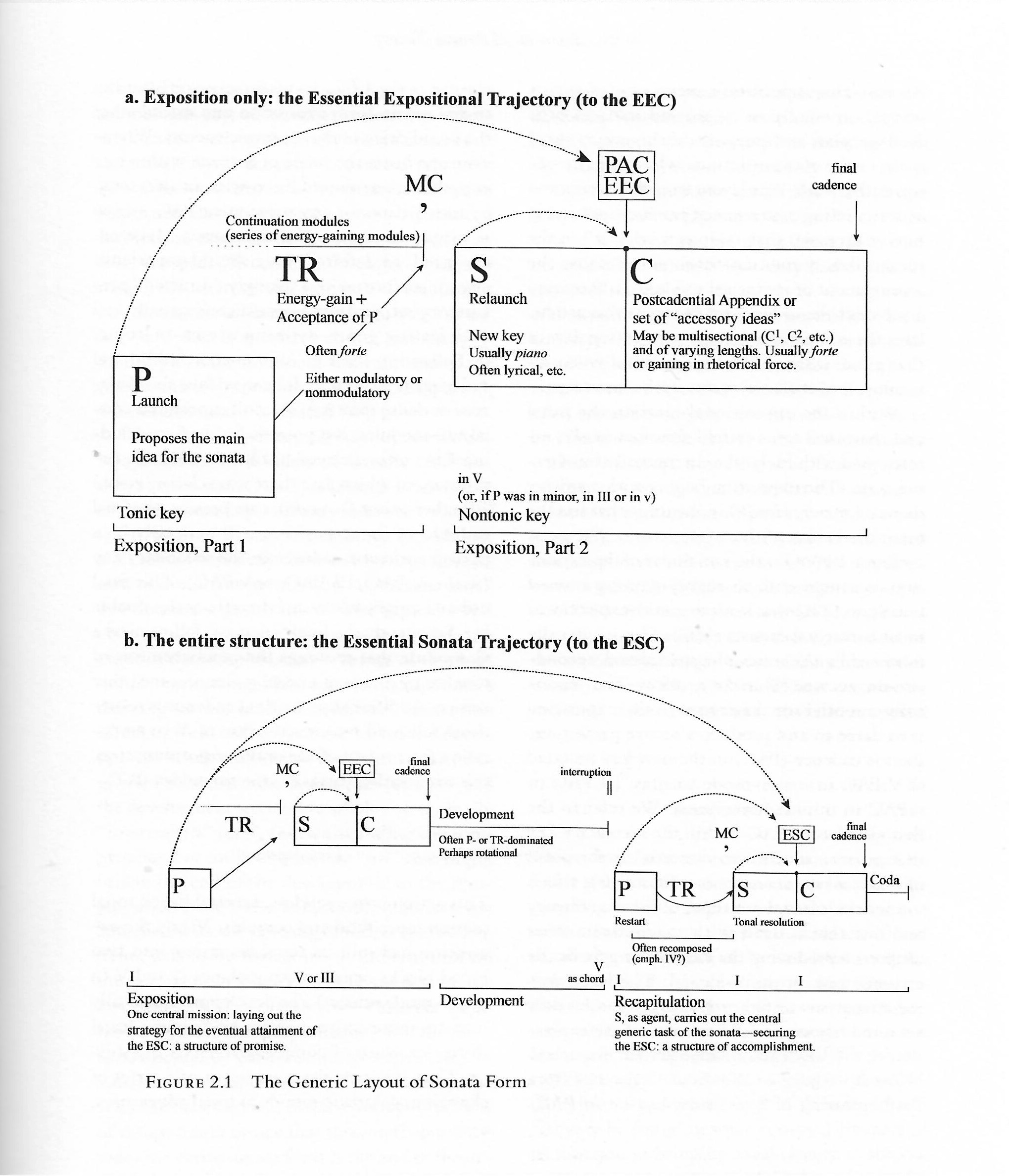De muziektheoretische literatuur over muziek in sonatevorm rond 1800 werd in 2006 verrijkt met het werk van James Hepokoski en Warren Darcy:
Hepokoski J. A. & Darcy W. (2006). Elements of sonata theory : norms types and deformations in the late-eighteenth-century sonata. Oxford University Press.
In 2020 publiceerde Hepokoski een vervolg (met daarin ook aandacht voor Schubert en Brahms):
Hepokoski, J . (2020). A sonata theory handbook. Oxford University Press.
In Elements wordt de gangbare literatuur rondom sonatevorm besproken. Namen als Tovey, Rosen, Kerman, Ratner, LaRue, Schoenberg, Réti, Ratz en Caplin passern de revue.
H. & D. onderscheiden 5 typen sonatevormen die verschillen al naar gelang het muzikale doel van de compositie.
Type nr. 3 is de meest verspreide sonate-allegro vorm met een expositie, doorwerking en reprise.
De typen lijken het meest op elkaar wat de betreft de expositie, wat er na de expositie gebeurt is bepalend voor het onderscheid.
In vergelijking met gangbare analysebenaderingen van muziek in sonate-stijl voegen zij enkele labels toe die in het schema van de generic layout van de sonatevorm terug zijn te vinden (zie onder).
Ter verduidelijking en aanvulling enkele citaten:
Dialogic Form
"Sonata Theory's core concept is that of dialogic form. This means that each sonata movement that we encounter (most likely a piece from the post-1750 past that has persisted as a part of the standard performing repertory) can be grasped as having been set by the composer into a dialogue with contextually relevant, normative expactations of a once-in-place, taken-for-granted genre."
"... when we attend to any of a genre's exemplars as a singularity - that particular detective story; that particular chess game - our interest can shift to the aesthetic. Each invites us to become attentive to the sway of that specific realization: the expertise of its "madeness" or poesis."
"... any individual work is shot through with two aspects: the expectations of its genre and the internal realization if that genre as an aestheic or presentational singularity, a quality of individual craft or expertise."
Successive action zones within a musically narrative journey
"The familiar form sections exposition, development, recapitulation are viewed as action zones or action spaces."
Trajectories toward generically normative cadences (cadential spans)
"At the heart of Sonata Theory is the recognition and interpretation of expressive/dramatic trajectories toward generically obligatory cadences."
"... any sonata form consists of a succession of cadential spans, and the various action zones of a sonata are traversed through in order to attain and articulate their appropriate cadences before proceeding to the next zone."
Het onderstaande schema (type 3) geeft hun visie op wat zij noemen de "generic layout of sonata form":
Exposition only: the Essential Expositional Trajectory (to the EEC)
The Essential Sonata Trajectory (to the ESC)

- P: primary theme zone
- TR: transition
- S: secondary theme zone
- MC: medial caesura
- EEC: essential expositional closure
- C: closing zone
- ESC: essential structural closure
Rotation: benoemd als large scale recurrence. In termen van Erpf komt dit overeen met "herhaling op afstand".



